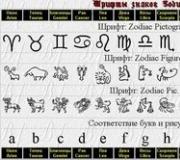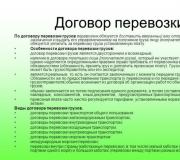How many tenses are there in English grammar? The use of tenses in English: the logic of use.
The cornerstone for everyone learning English is his time. Have you dismantled the group? Simple(Indefinite) and everything seems clear and easy. And you start the next one, and your head is already a mess. How to not just learn 12 tenses in English, but also to understand them in order to actually use them in speech, and not bury them in the “useful knowledge” section somewhere deeper in your head?
“Dreams and everyday life of a worm” - this visual table, which at one time blew up the Internet and helped millions stop making mistakes in time. If you are still “swimming” in this topic, take the picture from examples to yourself. Place it on your desk or print it and hang it in a visible place.
And right now, go through all 12 times. We learn fun, like children, and remember easily times in English!
Group Present (present)
Simple (Indefinite, simple): I eat apples every day. – I eat apples every day.
Continuous: We are eating the same apple now. – We are eating the same apple now.
Perfect (completed): I have already eaten this apple. - I have already eaten this apple.
Perfect Continuous (complete-long): I have been eating this apple since early morning. – I have been eating this apple since early morning.
Group Past (past tense)
Simple (Indefinite): I ate apples yesterday. – I ate apples yesterday.
Continuous: I was eating an apple when my mother came. – I was eating an apple when my mother came.
Perfect: We had already eaten apples when we began to eat plums. – We had already finished the apples when we started eating the plums.
Perfect Continuous: I had been eating apples for two hours when my friend arrived. – I had been eating apples for 2 hours when my friend came.
Future group (future tense)
Simple (Indefinite): I will eat apples in summer. - I will eat apples in the summer.
Continuous: I will be eating apples at 5 o'clock tomorrow. – I will eat apples at 5 o’clock tomorrow.
Perfect: I will have eaten this apple before the midnight. “I’ll finish this apple before midnight.”
Perfect Continuous: I will have been eating this apple for two hours before the guard comes. – I will be eating this apple for 2 hours before the watchman appears.
Friends, and finally, some useful advice: try to understand, not memorize 12 times of the English language. You need to clearly understand how the next time differs from the time you have already studied. If you still barely see the difference, it’s better to stop and bring this piece to perfection, and then move on.
Also, be sure to practice. At home, at work, with friends. We are confident that your environment will understand and support your desire to improve English. And you, thus, will take the learned rules from passive into active spoken language. Good luck and good mood!
It is no secret that one of the most popular grammatical topics for students and those interested in English is still the topic: tenses in English. Interest in it is quite justified, since the cases of using one or another tense in English differ from their understanding in other languages and thereby cause many difficulties.
There are such lovers of conquering linguistic peaks who strive, at all costs, to master everything English tenses. But in reality, even the British themselves do not use half of them.
English tense table
Of course, sketchiness will help to understand the ornateness of this topic. English tense table is a wonderful visual aid and should always be at hand for every beginner learning a language.
Answer unambiguously the favorite questions of beginners: “ How many tenses are there in English?? What to prepare for? Why so many? pretty hard. You could say 24! (16 in the active voice and 8 in the passive) and frighten students with the abundance of tense forms, especially continuous, complete and complete-continuous, the analogues of which seem to have no analogues in their native language.
| Tense | Simple | Continuous | Perfect | Perfect Continuous |
| Present | I am doing |
I have been doing He has been doing |
||
| Past | I did | I was doing | I had done | I had been doing |
| Future | I will do | I will be doing | I will have done | I will have been doing |
| Future in the Past | I would do | I would be doing | I would have done | I would have been doing |
You can reassure us by answering that in English there are also three time planes - past, present and future, and then we are faced only with shades of actions. True, the verb forms that you have to comprehend will not become smaller from this :)
| Simple | Continuous | Perfect | |
| Present | The work is done | The work is being done | The work has been done |
| Past | The work was done | The work was being done | The work had been done |
| Future | The work will be done | - | The work will have been done |
Let's leave this question to the world's leading philologists, who have been arguing about this for many years, and let's focus on the use of tense forms.
Tenses in English seem quite complex, but this is only at first glance. It is important to understand some principles:
Firstly, it is possible to draw a parallel when studying tenses with the Ukrainian and Russian languages. The difference is that grammatical means are used to convey shades of actions in English, while lexical means are used in Ukrainian and Russian.
Secondly, the formation of tenses in English is much simpler and more logical. Memorizing these forms usually does not cause difficulties for students. It is much more difficult to decide where and what form should be used. This is what we will pay special attention to.
Active Voice / Active voice
|
Simple |
Continuous Long-term |
Completed |
Perfect Continuous Completed-long |
|
| Data. What we do with a certain frequency. Always used when you need to talk about a sequence of events. | Long procces. As a rule, it is translated with an imperfective verb. | Perfect action. Translated using perfective verbs. | An action that lasted a certain period of time and, accordingly, ended or ended at a certain moment. | |
| Present The present |
I cook and pizza sometimes. - Sometimes I cook pizza. | I am cooking a pizza now. - Now I'm making pizza. | I have just cooked the pizza. - I just made pizza. | I have been cooking the pizza for half an hour. - I have been preparing pizza for half an hour (up until now). |
| Past Past |
I cooked the pizza, wrote the letter and went to the shop. - I made pizza, wrote a letter and went to the store. | I was cooking the pizza yeasterday. - I cooked this pizza yesterday (for a while). | I had cooked the pizza by the meeting. - I prepared pizza for the meeting (the action ends at some point in the past). | I had been cooking the pizza for twenty minutes when my friends came. - I had been preparing pizza for twenty minutes when my friends arrived. |
| Future Future |
I will cook a pizza tomorrow. - I will cook pizza tomorrow (there is no emphasis here on the duration or completion of the process, we are simply reporting the fact). | I will be cooking a pizza tomorrow. - I will cook pizza tomorrow (within a certain time). | I will have cooked a pizza by the meeting. - I will prepare the pizza for the meeting (that is, the pilaf will be ready by this time. | I will have been cooking a pizza for twenty minutes by the time my friends come. - I will have been cooking pizza for twenty minutes by the time my friends arrive. (This form is used very rarely and, as a rule, in book speech). |
| Future in the Past denotes a future action relative to a specific moment in the past. As can be seen from the examples, the sentence necessarily contains a verb in the past tense in the main clause; without it, the use of Future in the Past is impossible. |
He said that he would cook a pizza tomorrow. | He said that he would be cooking a pizza tomorrow. | He said that he would have cooked the pizza by the meeting. | He said that he would have been cooking pizza for twenty minutes by the time his friends came. |
Passive Voice
|
Simple |
Continuous Long-term |
Completed |
Perfect Continuous Completed-long |
|
|
The present |
Letters are sent every day. - Letters are sent every day. | Letters are being sent now. - Letters are being sent now. | Letters have already been sent. - The letters have already been sent. | |
|
Past |
Letters were sent yesterday. - The letters were sent yesterday. | Letters were being sent at 5 yesterday. - Letters were sent at 5 o'clock yesterday. | Letters had been sent before he phoned. - The letters were sent before he called. | |
|
Future |
Letters will be sent tomorrow. - The letters will be sent tomorrow. | Letters will have been sent by 5 tomorrow. - Letters will be sent tomorrow before 5 o'clock. | ||
| Future in the Past |
Tense agreement in English
If you have figured out the forms of construction of certain tenses and cases of their use, then the next difficulty may be tense agreement in English. Here you not only need to correctly construct the tense itself, but also understand the very principle of coordinating the main and subordinate parts of a sentence. This is difficult to explain at first glance. The good news is that special attention should be paid to the fact that if in the main sentence the verb is in the past form, then in the subordinate clause the verb must also be in one of the past tenses, and it does not matter whether it is about actions in the present or the future.
Table of tense agreement in English:
| Time in direct speech | Present Indefinite | Present Continuous | Present Perfect | Past Indefinite | Past Perfect | Future Indefinite |
| Time in indirect speech | Past Indefinite | Past Continuous | Past Perfect | Past Perfect | Past Perfect | Future Indefinite in the Past |
And the main thing is that in English you don’t need to know many tenses to communicate. After all, the British speak as easily as possible without a clutter of complex structures. The basic tenses (Present Simple, Past Simple, Future Simple) are quite enough, but it is also advisable to master the Present Continuous and Present Perfect. The use of complex tense forms in colloquial speech will only indicate your illiteracy.
Of course, for varied and sophisticated coherent speech while working and expressing your thoughts on paper, you should be patient and memorize the entire table of tenses. And we will be happy to help you, contact us, we offer classes in groups and individually:
Tenses in English are the main component of any course of study. I know from my own experience how difficult they can be for some people. But you can’t go anywhere without them.
There is a huge amount of literature on this topic, but this routine only confuses.
If you want to start learning English in order to know English or simply, for example, be able to compose questions or translate texts, then this article will be your assistant.
With the help of this article you will understand the difference in times, it will help you stop being confused about times, but the rules, forms of education - all this is easily accessible for independent study. After reading, you can also go deeper into studying this topic based on the principle.
So let's get started.
There are 4 tenses in English:
Simple.
Long lasting.
Completed.
Durable-complete.
Each time is divided into:
The present
Past
Future
It’s simple, tenses are divided according to the same system in the Russian language. Now I will briefly describe each of the times and its distinctive properties and how to easily and quickly distinguish it from others.
1) Simple
This is the easiest time. The easiest.
Meaning- statement of fact. Denotes a regular, usual, natural action. Facts, truths. This time does NOT have a specific point in time.
In general, if you just say it, it shows a normal action, someone did something, someone knows something, etc. or just a fact. The same action that, for example, a person does every morning, or every day, or what a person did yesterday.
If the sentence contains the words - everyday, usually, never, at first, then, after, in the morning, in the evening, tomorrow, next week, next month, often, soon - then most likely this is a simple tense. You can distinguish by the presence in a sentence of auxiliary verbs in negative and interrogative sentences: do, does, did, didn"t, don"t, will, shall, will not, shall not. Remember - regularity, fact, ordinary action.
The present- the person is doing this now, or he is doing this every day (talking every day, or reading a book, writing a letter, etc.).
Past- an action that happened or happened in the past. Well, or a fact from the past (wrote a letter yesterday, worked every day, worked from 90 to 95, went shopping in the evening).
Future- an action or a series of actions that will happen in the future, predictions, forecasts (I will work tomorrow, I will write a letter, I will study foreign language every day, I will do an essay soon).
2) Long-term
Process is the main meaning of time. Shows that an action is being done, has been done or will be done certain time. I did, but didn't do it. If the sentence contains the words - now, at the moment, at, when, while, at 20 o"clock, tomorrow - then most likely it is a long time. You can distinguish it by the ing ending of the verbs. Auxiliary verbs - was, were , was not, were not, am, will be, shall be. Remember - it shows that time was spent on the action.
The present- an action that a person does right now, he actually does it and wastes his time, and this is exactly what is shown in the sentence (Working now, writing a letter at the moment, going home now).
Past- an action that occurred at some specific moment in the past, or that was done at the moment when another action occurred. (I was writing a letter at 7 pm; he was writing a letter when I entered the room, he had been sleeping for 4 hours).
Future- an action that will take place at a certain moment in the future (I will write a letter at 7 pm, I will dig the earth tomorrow from 7 to 9 am).
3)Completed
The result is the main meaning of time. Shows that the action is completed, is there a result! If a sentence contains the words - twice, lately, recently, several times, yet, already, never, just, ever - then this is most likely a completed tense. You can distinguish them by the auxiliary verbs - had, has, have, shall have, will have.
Remember - there is a result here, the action here has completed or will end, and this is either way.
The present- an action that took place in the past, but has the most direct connection with the present. Example: he has already written a letter. Let me explain: he did this in the past, but the result applies specifically to the present. Example: I just lost my key. Let me explain: what he lost was in the past, but he is talking about it now.
Past- an action that completed before a certain point in time in the past (I wrote a letter by 7 o’clock).
Future- an action that will be completed by some specific moment in the future (I will write a letter by 7 o’clock).
4) Completed - long
Here I recommend independent study. This tense is not used in colloquial speech, and it is better to come to the study of this tense after studying the above written tenses. Don't worry about it, work out the previous tenses!
So, to summarize:
Simple tense is a statement of fact.
It's a long process.
Completed is the result.
Practice makes perfect. Do simple tasks, guided by this article, and soon you will be able to easily distinguish one time from another. Improve yourself! Good luck!
Oh, the times! Oh, morals! Tenses in the English language are considered to be the most difficult section of grammar. But this is one of the most common misconceptions. Along with the fact that the majority distinguishes a dozen tenses in English, and three in Russian. So: don’t trust anyone :) In the English language, experts will highlight more than 12 tenses (take at least Future-in-the-Past for warming up). And in Russian, in theory, there are also more than three. Need proof? Yes please.
Times in the Great and Mighty
Only a first grader thinks that we have past, present and future tense. But at the same time, everyone will feel the difference in these proposals:
I was walking home through the park yesterday.
I walked home through the park yesterday
Immediately a quick question: what is the tense in the sentences? Yeah, past. What verb did “went” come from? Well, yes, from the verb “to go.”
The English language also has tricky irregular verbs, which in the past tense take on such a form that you can try to guess the original one. So the myths that camouflage is practiced only in the English language can already be safely considered debunked.
Let's go back to "went" and "went". Can we smell the difference? In the first case, we are talking about some long time: I walked to myself and walked through the park, without touching anyone. And in the second - about what has already happened. The questions answered by “went” and “went” are also different: “what did you do?” and “what did you do?” Such forms of verb tenses in Russian are usually called imperfect/non-perfect form (what to do) and perfect/perfect (what to do).
And that is not all. For example, when we want to emphasize the duration of an action, we become more sophisticated and use synonyms of verbs that are very close in meaning. For example:
Yesterday I walked around the park in a great mood.
Now you can imagine how difficult it is for a foreigner when he wants to convey a long action using the verb “go”. Surely he will come up with something like “Yesterday I walked... mmm... walked... walked... through the park in a great mood.” And try to explain to him that to convey a long-term action, it is better to take the verb “to walk” and put it in the past tense in the non-perfect form.
Whose tense system is easier?
This is ours:
| Imperfect form (Indefinite) |
Perfect form ( Perfect) | ||
| long-term | regular | ||
| Present | I'm playing | — | — |
| Past (Past) | played | played | played |
| Future (Future) | I will play | I'll play | I'll play |
Moreover, in order to denote the present continuous or past imperfect tense, we will have to explain this further. Compare:
I play the guitar (that is, in principle I know how to play this instrument).
And
I'm currently playing the guitar (that is, I'm sitting and playing right now, I have nothing else to do).
Tenses in English
While we are getting more sophisticated with perfect/non-perfect forms of the verb, and also practicing finding synonyms, the English have created a completely logical and understandable system of tenses. Each verb easily forms 12 main groups. Let’s take the same “walk” (walk) and use it by default with the pronoun I (I).
Table of tenses in English with examples
| Simple | Continuous | Perfect | Perfect Continuous | |
| Present | I walk I walk (in general, in principle) |
I am walking I'm walking/walking (right now) |
I have walked I went (already) |
I have been walking I walked (did it and completed it by now) |
| Past | I walked I went (in general, in principle) |
I was walking I was walking/walking (a while ago) |
I had walked I was walking (the action had already ended at a certain point in the past) |
I had been walking I have walked (done this and completed it by a certain point in the past) |
| Future | I will walk I will walk (in general, in principle) |
I will be walking I will walk/walk (for a while) |
I will have walked I'm like (the action will end at a certain point in the future) |
I will have been walking I will walk (and complete it by some point in the future) |
Thus, when reading a sentence in English, one can easily understand what the person means. While in our country the use of explanatory words is mandatory. While we need to use explanatory words for this. For example, to convey the Future Perfect tense, we will add “I’ll finish” to the main semantic verb: “I’ll finish doing my homework by 5 pm.” These are the simple rules of English tenses that, thanks to exercises, are quickly memorized.
And whose tense system is ultimately easier?




